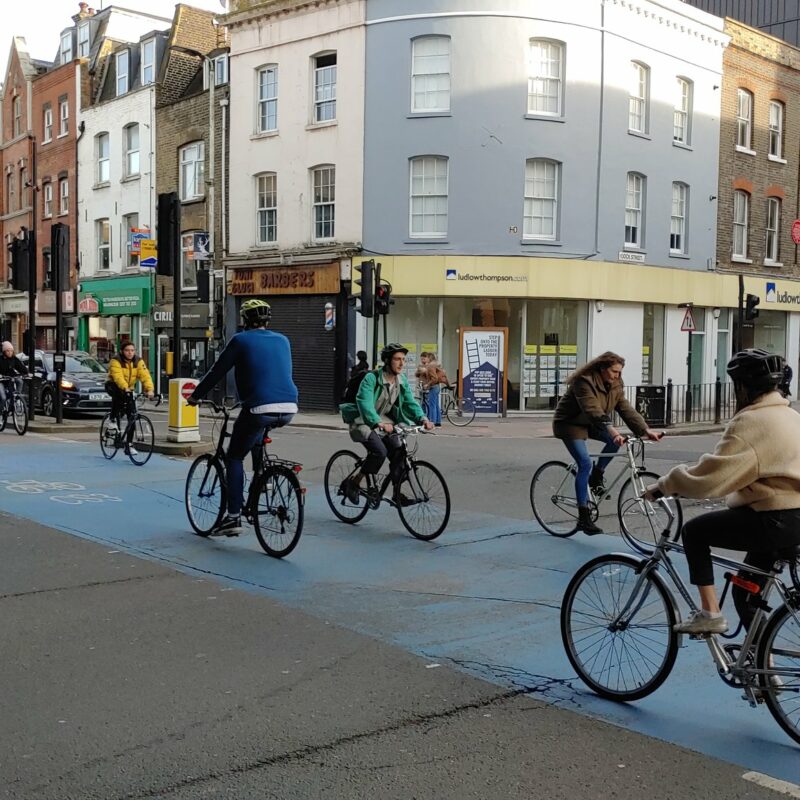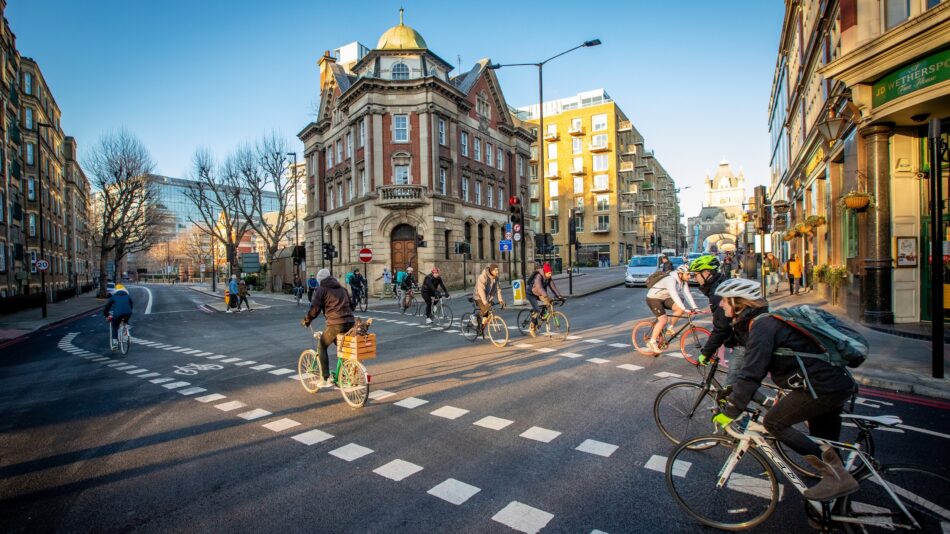

Cycleway 4 (also known as C4) joins the growing network of signed Cycleways in London – with an over 5km route from Greenwich and beyond to Tower Bridge. This weekend our borough groups in Southwark, Lewisham and Greenwich celebrated its opening, capping off over a decade of diligent campaigning work on their and our parts as the final section to open on Lower Road is finally finished.
C4 is effectively a 5km long route of largely cycle tracks between Tower Bridge and the outskirts of Greenwich. The route there currently then diverts around the National Maritime Museum and Cutty Sark for a little over 1km, then there’s a further 2+km to reach Charlton, including going through the infamous and (previously, we hope) lethal Angerstein roundabout junction.
“London Cycling Campaign has campaigned for Cycleway 4 for decades. We’re so happy to see it finally open! Even before the Lower Road gap was closed, you could see thousands of people cycling on it that would never have done so before. A connected and coherent, safe cycle network is the vital next step for our city to take to enable Londoners to embrace cycling as a healthy, clean, sustainable transport mode – already cycle journeys in London match up to a third of all Tube journeys. We’re looking forward to the next routes coming from the Mayor, TfL and all boroughs so London can truly become a cycling city.” Jakub Mamczak, Senior Campaigns Officer at London Cycling Campaign, said in the TfL press release.
C4 joins the still relatively short list of Cycleways that use primarily protected cycle tracks on main roads and cover longer distances. Also in this list are the original C2 from the City to Stratford, and north-south C6 along the Embankment and east-west C3 from Paddington to Barking, C9 in Hammersmith & Fulham and extending out through Hounslow, as well as major routes put in by Waltham Forest, Enfield, and Kingston via their ‘mini Holland’ programmes and routes put in by Camden and Islington.
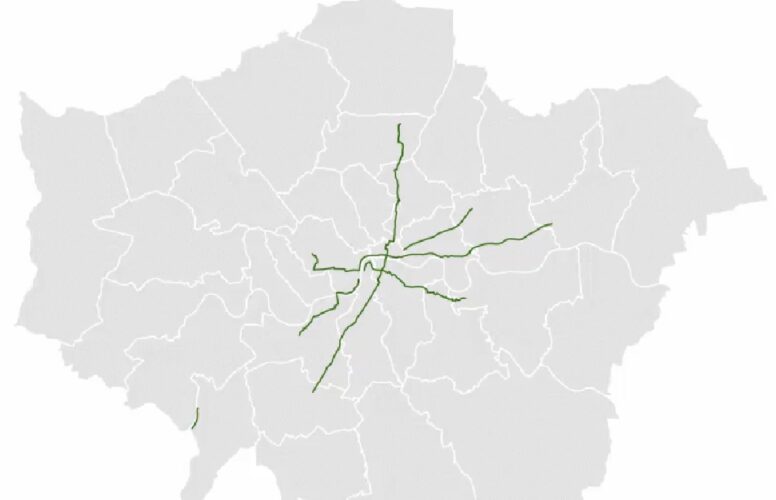
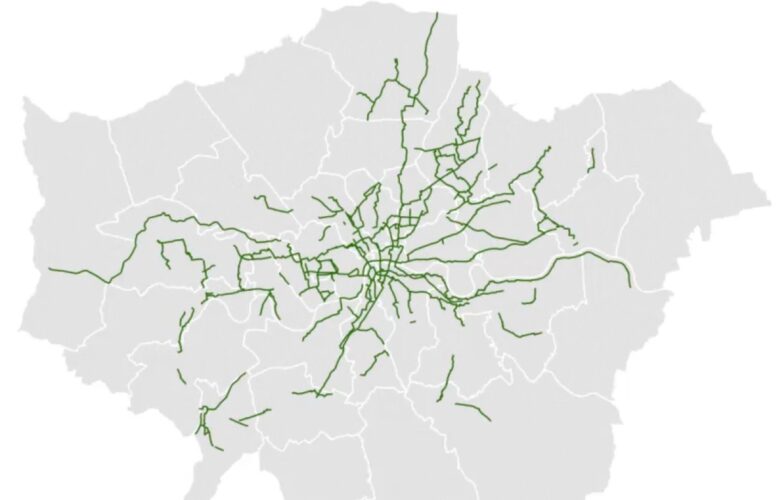
The result of all this expansion of the Cycleway network is the Mayor, Sadiq Khan, has announced that since 2016 he has quadrupled the length of Cycleway routes in London – from the 90km built by his predecessor Boris Johnson – to over 360km by end of March 2024. He’s also more than quintupled the amount of protected cycle tracks on main roads some time back – exceeding his commitment to LCC to triple the mileage he made in 2016 for his first term.
The left image above is what the Cycleway network looked like in 2016, the right image is March 2024. Nearly a quarter of Londoners now live within 400 metres of the ‘Strategic Cycling Network’ – ie a signed Cycleway (the aim is to get to 70% of Londoners by 2041 – although we think that’s way too far off).
The process to become a signed in Cycleway has also been clarified in the last few years – so that not any old route TfL or the boroughs decide is fit for cycling is qualified. We have significant concerns over TfL’s Cycle Route Quality Criteria (primarily that we want a lower bar on motor vehicle volumes before cycle tracks are considered necessary, we want a ‘directness’ metric so that routes can’t wiggle all over the place, and we want ‘social safety’ included so routes don’t include isolated canal towpaths, parks and industrial estates at night). But the good news is that broadly, TfL’s systems now mean that anything considered a ‘Cycleway’ can’t be utterly rubbish to cycle on – and the older cycling routes delivered years ago have either had to have significant upgrades to be signed in and counted, or have been taken out of the official network map.
TfL is still in the process of upgrading Boris’ ‘Cycle Superhighways’ (marked on TfL’s map as CS routes), of which some were protected tracks on main roads and some were just ‘blue paint’ (now frequently upgraded with ‘wand’ protected tracks); and Quietways (Q designations on the map). But where they achieve the new quality criteria, they’re being signed with a C designation.
Want to know where the next Cycleways are going to appear? TfL’s Strategic Cycling Analysis (SCA) is part of its newly-refreshed Cycling Action Plan (2). Campaigner Will Petty from our Hackney Cycling Campaign group has helpfully overlaid the latest SCA map over a map of London streets in Felt so you can zoom in and see where the corridors are that TfL identifies as a a priority for a Cycleway. It’s important to note that just because there’s potential for cycling there, doesn’t mean the Cycleway will directly run along a main road or follow the exact line of the identified corridor. Nor does it even mean one will definitely happen – that needs council support in the borough to get.
What is important to note however in all this is that there would have been no C4 without LCC and its borough groups relentlessly pushing not only TfL and the Mayor but councils to get on with it. The Mayor’s direct commitment to cycle tracks on main roads in 2016 was to LCC. And LCC and its borough groups have been instrumental in pushing for all the other Cycleway schemes – whether on main roads or through Low Traffic Neighbourhoods (LTNs) etc. – that you can see mapped above. And there certainly wouldn’t be where we are now on cycling in London, without LCC.
LCC pushed for and won flagship high-quality cycle schemes when there really were none (during 2012’s ‘Love London, Go Dutch’ campaign), covering not just the first long distance main road cycle tracks London had seen, but also expanding cycle routes in the outer London ‘mini-Holland’ boroughs of Enfield, Kingston and most famously, Waltham Forest.
LCC then pushed for and won a tripling of protected cycle tracks in London during 2016’s ‘Sign for Cycling’ campaign in the run up to Sadiq Khan’s election. And we’ve helped ensure the spread of the start of a truly interconnected cycle network of main road cycle tracks and residential street LTNs that you can see today in significant parts of London.
The result of these, the Mayor recently announced is that Londoners love cycling in our capital city. Circa a quarter of Londoners now periodically cycle and circa another quarter want to start. Cycling now accounts for 4.5 percent ‘mode share’ of all London journeys, and Londoners cycle 1.26 million journeys a day – equivalent to about a third of the entire tube network journeys.
This week, C4’s opening means another slice of London can get on a bike from their front door and ride to central London (or Greenwich) safely and happily. We’re really proud of that – now roll on the rest of London!
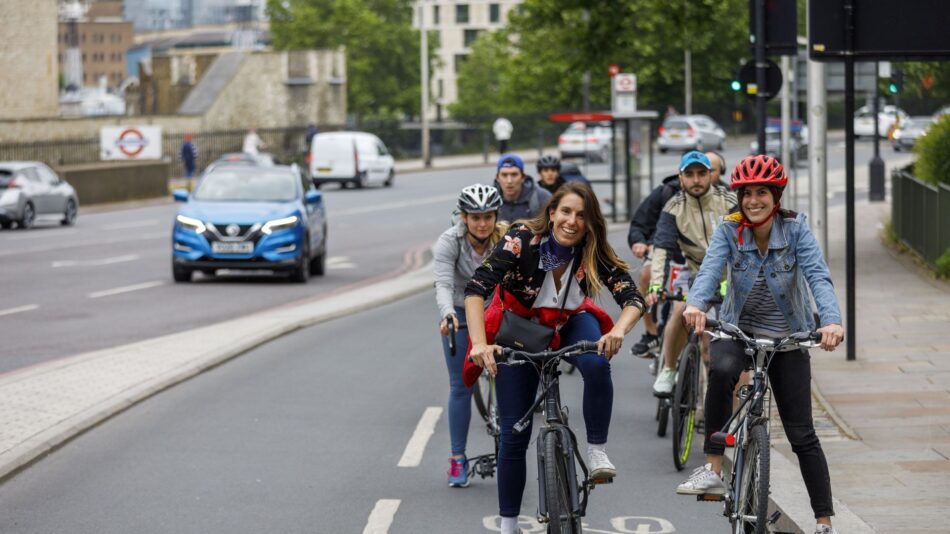
Help LCC win more Cycleways
The best way to support our work making London better for cycling for everyone is to join us as a member. You'll be joining over 12,000 other Londoners calling for cycling to be made safer and more enjoyable in every borough. Join today to make your voice heard and receive a host of great benefits.
Keep up to date
